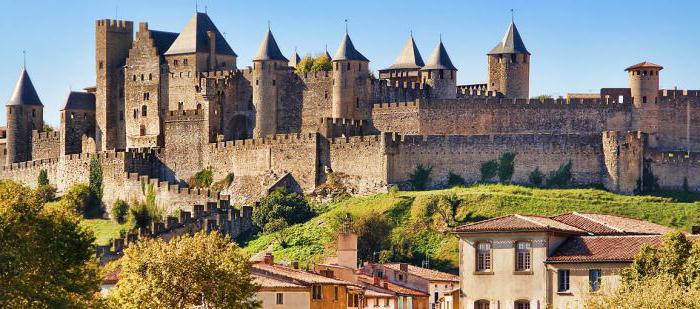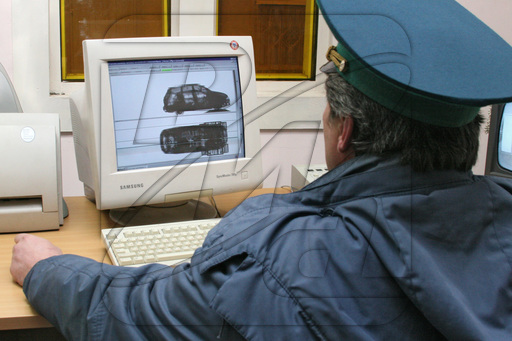Landmarks of Languedoca Roussillon in France
The joyful and friendly region of Languedoc-Roussillon is located in the south of France, from the north is limited to the central massif, from the south of Pyrenemi. Its shore is washes the Mediterranean Sea, there are many resorts with wonderful sandy beaches. In small towns of the region, historical heritage was preserved in the small towns: castles, cathedrals, palaces and mansions of the French aristocracy. This is one of the world's largest wine regions. Production of wine here began in the third century to our era. Vineyards occupy an area of \u200b\u200bapproximately 400 thousand hectares.
On the dual name it is easy to guess that earlier it was two different regions: Languedoc and Roussillon. And although politics and commerce splured them together, in terms of geography and culture they remained different.
From Paris, the region separate only three hours of driving on the high-speed train TGV.
Carcassonne (Carcassonne)
Carcassonne is able to surprise the tourist with its lively fabulous paintings. Numerous defensive towers and gear ancient protective walls are shocked by their greatness. This medieval urban fortification is incredibly well preserved, it is worth seeing. The castle is built on a wide hill of 148 meters high, for mid-centuries it was a favorable strategic place. Carcassonne has an elliptical shape, it is surrounded by double chain thick protective walls with 54 towers. Strengthening partially related to the French Gothic period were erected during the reign of Louis IX, in 1250, and with Philip Bold, in the 1280th. Every year in July, Carcassonne invites tourists to an unforgettable

Montpellier
Montpellier is the main tourist center of the region. Located near the river Les, in her valley. From the Mediterranean Sea, the city is separated by 10 kilometers. This is an administrative center of oxidation. Here, nature created ideal conditions for growing grapes. Travelers attract elegant buildings, grand area and mild Mediterranean climate. In this lively city, many universities. In the XII century, he belonged to the Aragon kings, and in the XVI century there was the capital of Huguenot, today it is the center of culture of France. There are art galleries and museums here. In the main museum of the city of Four, there is an exceptional collection of works of Italian, Dutch and French painters since the Renaissance era and to modern times. A walk through narrow streets Montpellier will admire medieval houses. The most suitable for a leisurely walking inspection area - Esplanada Charles de Gaulle in the east of the Old Town.

Serne (Céret)
The city of Serya is located 32 km from the southwestern direction from Perpignan among the delicious rural areas of the foothill of Pyreneev. This is the city of artists. Even at the beginning of the twentieth century, at the invitation of a sculptor from Catalonia, Manolo and the composer DecoData de Severek, many famous painters move to Serya, which turned into a creative settlement since then. Here in the Museum of Contemporary Art is awesomely rich for a small town a magnificent collection of works of modern masters: Matisse, Chagal, Maolet, Dali, Manolo, Picasso and Tapies.

Narbonne (Narbonne)
This is a former important port of the Roman Empire, and now a small seaside town. The special landmark of Narbon is the central square surrounded by majestic buildings. The magnificent collection of painting, enamel, furniture and ceramic items are exhibited in the museum of art and history, the room for which is the palace of Archbishop of the XIII-XIV centuries. There is also a museum of archeology where classic, prehistoric and medieval exhibits are stored. An old and new palaces of the XII and XIV centuries should be visited, the impressive structure of the Saint-Just Cathedral, erected in 1272-1332, which represents the North-French gothic architecture. Tourists will hear the magnificent singing of the choir under his arches and will see the stained glass center of the XIV century. The building of the Church of the Sein-Paul-Serge XII century, erected in the early-Gothic style, is located in the southwestern part of the city.
Amelie Les Bains (Amélie Les Bains)
The resort city, which spread in a picturesque valley, is obliged to his name to the wife of King Louis-Philipp. More ancient Romans noted the value of mineral water from a local natural source. From the attractions should be visited by the ruins of the ancient Roman baths and the church of the X century. Every year in August there is an international folklore festival of music and dance of the peoples of the world.
Arles-sur-Tech (Arles-Sur-Tech)
This is a small picturesque old town near the peak of the Puch de L. "Estelle, in the territory of which Saint-Marie is founded in the VIII century. Over time, the city has appeared around him. In the church, the abbey can be familiar with the ancient sarcophagi, the oldest of which is dated IV The early-gothic monastery of the XIII century looks beautiful and refined. It is impressive by the tower and the rich decoration of the interior of the parish church near the abbey. It is worth a walk to the de la-fu gorge and enjoy the stunning beauty of natural species.
Saint-Martin-du-kaiga abbey
The picturesque location and a long history of the monastery of St. Martin attract tourists here. It looks like a fortress and built over the precipice at an altitude of 2785 meters - on the top of the sheer cliff. The local stunning landscapes and the historic church of the monastery lead visitors to delight. This Romanesque Abbey is known for its monastery of the XI century. The view opening from the top of the hill allows you to safely contemplate the beauty of the province of Languedoc-Roussillon.

Prades (Prades)
This small, but the picturesque town is located in the Valley of the Tet, next to the foot of the Mountain of Le Cana. From Perpignan, it separates only 44 km. Prad is located on the territory of the Catalan Regional Natural Park, this city is culturally connected with neighboring Catalonia. The border with Spain is guarded by the fortress on Mount Mont-Louis, its author is the great architect Voban. His romance tower and paintings by the artist from Catalonia XVII century Leo Polge, among other attractions, the Gothic Cathedral of St. Pierre is allocated. Here lived in the exile of the famous cellist Pablo Kazals (1876-1973). In his honor, from July to August, a chamber music festival is held annually in Prara.

Eg-Mortes (Aigues-Mortes)
The historic city is known for its fortifications that were erected during the Middle Ages. The territory of the Nature Reserve Kamarg is adjacent to it. Surrounded by a rectangle from the huge city walls, in which there are 15 towers and 10 gates. The architectural feature of the Eg-Mort is wide streets that contributed to the reflection of the offensive. The best view of the city opens from its walls, and the narrow streets of the old city will help to plunge into the atmosphere of the Middle Ages. Eg-Mort is one of the most impressive cities of Languedoc-Roussillon Province.



